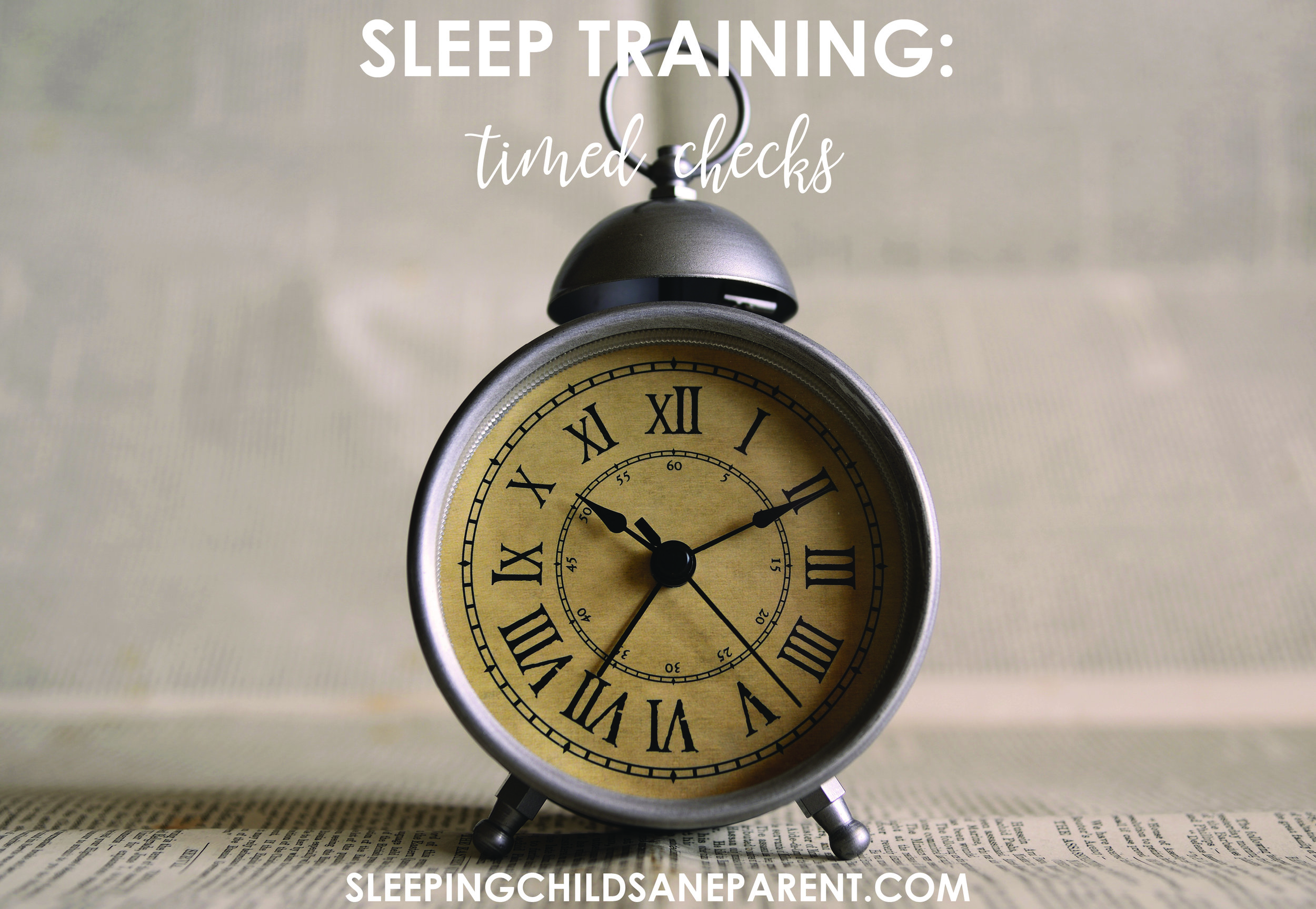There is no "one right way" to sleep train every baby and toddler out there. Some children are more stimulated by parental presence during sleep training; other children are more calmed by parental presence during sleep training. Some parents are more reassured the more involved they are in the training; other parents find it easier to be as removed from the training as possible. This sleep training series is designed to show you some of the options available for sleep training so that you can decide what will work best for you and your child. Click for other training methods.
*Formal sleep training methods are generally suggested for children who are at least four months old (adjusted).
Overview
Using timed checks involves laying your baby down when it's time to sleep, leaving the room to allow her the opportunity to figure out how to fall asleep on her own, and returning at timed intervals to briefly reassure her if she's crying.
This Method is Good for:
Children who are calmed by parental presence during sleep training
Possibly for children who have co-slept (either in the same room or same bed) with their parents
Parents who want to feel like they're doing something to help soothe their child
Parents who do not own a video monitor
Parents who are committed to consistency
This Method is NOT Good for:
Children who are stimulated by parental presence during sleep training (if your child cries louder during and/or after your checks, then checks probably aren't a good fit)
Parents who are unwilling to keep a close eye on the clock or set timers
Parents who are unwilling to endure some crying
How it Works
After a soothing routine, lay your child down and leave the room to allow her to practice falling asleep on her own. If she starts to cry (not just mildly fuss), set a timer for a set amount of time (see below). After that time, you can quietly go in and check on her. These checks are so you can verify that your child is safe and so that she knows you’re still around, even if you aren’t constantly in sight.
Some experts recommend increasing the amount of time between checks with each subsequent check (so perhaps 5 minutes, then 10, then 15), while others recommend keeping the timing consistent. Either option can produce good results, so if you would rather increase the time with every check, feel free to do so. However, I recommend using the consistent timing method, since that is easier for parents: increase the amount of time between checks with each new day rather than each new check. If you struggle to leave your child crying for very long, start with short durations, perhaps 5 minutes for younger babies (4-6 months). Each day, add on at least 5 more minutes between checks. Remember that you are trying to train your child to fall asleep without your assistance, so you want to make yourself scarce! Aim for checks that are at 15-30+ minute intervals, as that will give your child more of a chance to fall asleep.
During your checks, you may pat your child's back/tummy and shhh her, but do not talk to her, and avoid looking into her eyes, as this is stimulating for babies/children. If she has been crying while lying on her back, she may need to burp the air she has swallowed. In this case, pick her up over your shoulder and burp her for a moment (use your best judgment in these cases, as picking her up will be stimulating, so we want to avoid it whenever possible). Stay no longer than 20-30 seconds, and then leave the room. If she starts crying again, set the timer again.
Make sure to not start your timer until your child starts to cry. If she is content, we don’t want to stimulate her by going in for unnecessary checks.
If you find that going in to check on her further riles her up, you may want to wait for a longer period of time between checks, or eliminate checks completely (come back for next week's post on Extinction).
Don't let another parent (or sleep consultant!) pressure you into doing any training method that doesn't feel right for you. No method is better or worse than another -- it's just a matter of which is the best fit for your needs and your child's needs. If you time things appropriately for your child and you remain consistent, you can see excellent results with any training method. If you need help selecting or implementing a method, don't hesitate to reach out to me.


